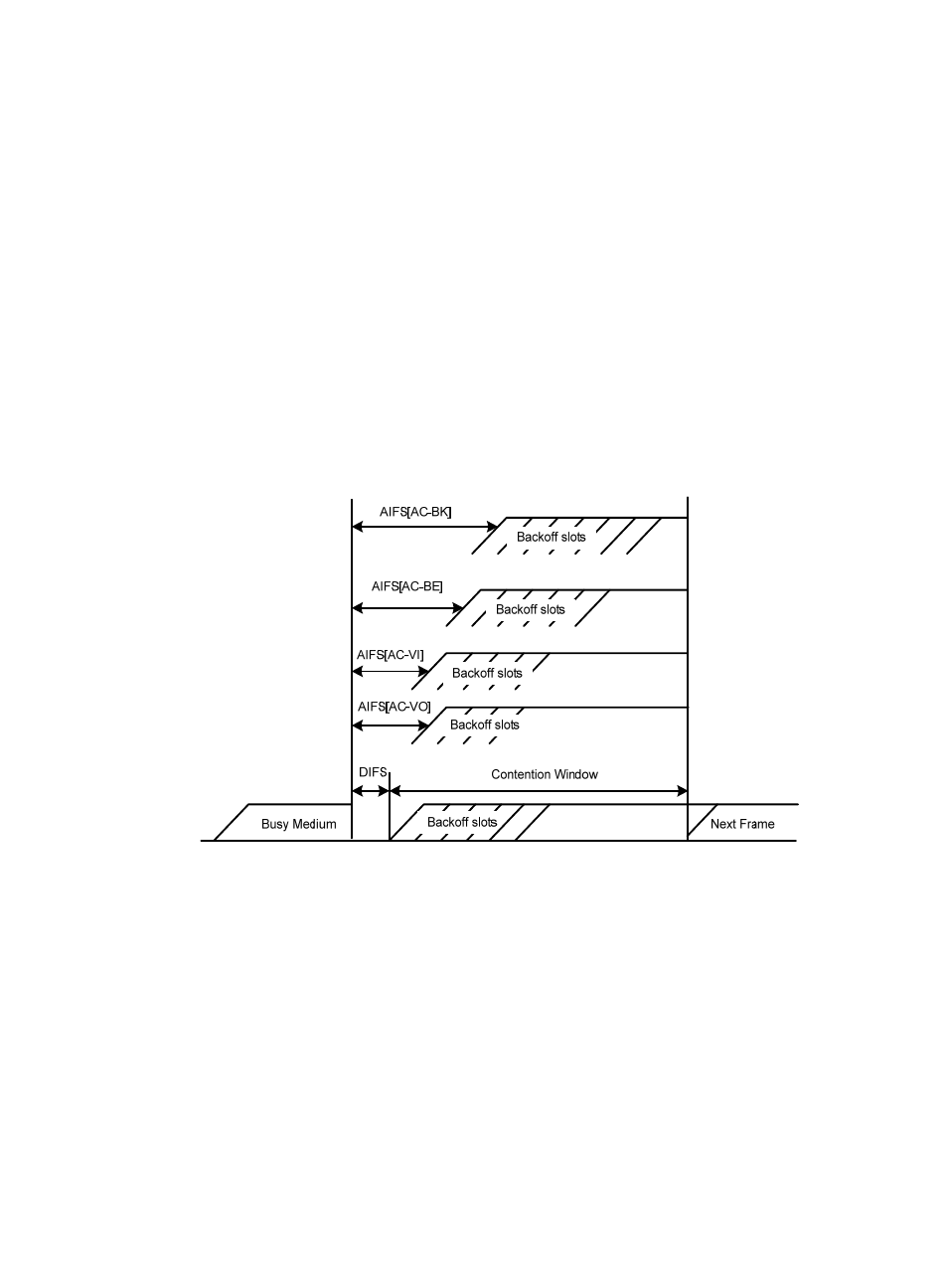Edca parameters, Cac admission policies – H3C Technologies H3C MSR 50 User Manual
Page 73

64
EDCA parameters
WMM assigns data packets in a basic service set (BSS) to four AC queues. By allowing a high-priority
AC queue to have more channel contention opportunities than a low-priority AC queue, WMM offers
different service levels to different AC queues.
WMM define a set of EDCA parameters for each AC queue, covering the following:
•
Arbitration inter-frame spacing number (AIFSN)—Different from the 802.11 protocol where the idle
duration (set using DIFS) is a constant value, WMM can define an idle duration per AC queue. The
idle duration increases as the AIFSN value increases (see
for the AIFS durations).
•
Exponent form of CWmin (ECWmin) and exponent form of CWmax (ECWmax)—Determine the
average backoff slots, which increases as the two values increase (see
for the backoff
slots).
•
Transmission opportunity limit (TXOPLimit)—Indicates the maximum time for which a user can hold
a channel after a successful contention. The greater the TXOPLimit is, the longer the user can hold
the channel. The value 0 indicates that the user can send only one packet each time it holds the
channel.
Figure 28 Per-AC channel contention parameters in WMM
CAC admission policies
CAC requires that a client obtain permission of the AP before it can use a high-priority AC queue for
transmission, guaranteeing bandwidth to the clients that have gained access. CAC controls real time
traffic (AC-VO and AC-VI traffic) but not common data traffic (AC-BE and AC-BK traffic).
If a client wants to use a high-priority AC queue, it must send a request to the AP. The AP returns a positive
or negative response based on either of the following admission control policies:
•
Channel utilization-based admission policy—The AP calculates the total time that the existing
high-priority AC queues occupy the channel in one second, and then calculates the time that the
requesting traffic will occupy the channel in one second. If the sum of the two values is smaller than
or equal to the maximum hold time of the channel, the client can use the requested AC queue.
Otherwise, the request is rejected.
•
Users-based admission policy—If the number of clients using high-priority AC queues plus the
clients requesting for high-priority AC queues is smaller than or equal to the maximum number of